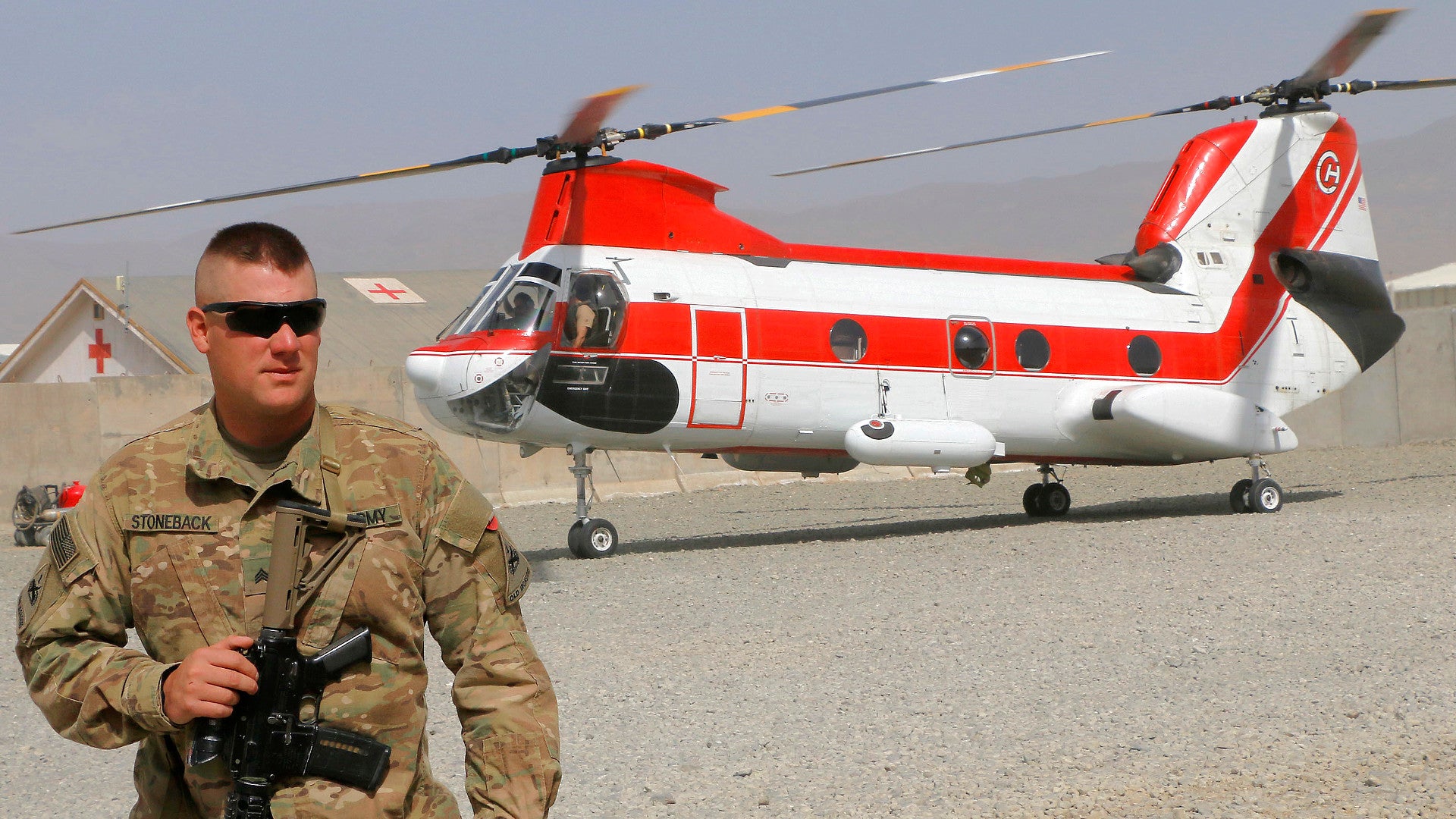The Pentagon is interested in having contractors provide two fixed-wing aircraft and two helicopters on call to rescue wounded American special operators in and around Yemen if necessary, as well as to perform various other missions. The announcement comes as it becomes increasingly clear that the U.S. military’s own aerial casualty evacuation capabilities are stretched thin and just months after it weathered serious criticism over relying heavily on private companies for these services following a deadly ambush in Niger.
U.S. Transportation Command, acting on behalf of U.S. Central Command, which oversees U.S. military operations across the Middle East and Central Asia, posted the notice on FedBizOpps, the U.S. government’s main contracting website, on April 30, 2018. The draft documents say the basic requirements are for the four contractor-operated aircraft to provide casualty and medical evacuation, personnel recovery, and passenger and cargo services.
American special operators publicly returned to Yemen in 2016 after a brief absence, ostensibly to support operations against Al Qaeda- and ISIS-linked terrorists. The new element, known officially as Special Operations Command (Forward) Yemen, is the one the contract announcement specifically names as needing the aviation support. Additional special operations forces have made short-duration raids into the country, as well.
The U.S. military has been actively engaged in various counter-terrorism and related training missions in the country since at least 2009. In 2015, a Saudi Arabia-led coalition repeatedly intervened in the country to halt the rise of Iranian-backed Houthi rebels, but American personnel on the ground at present are not supposed to be engaged in any operations together with those forces.
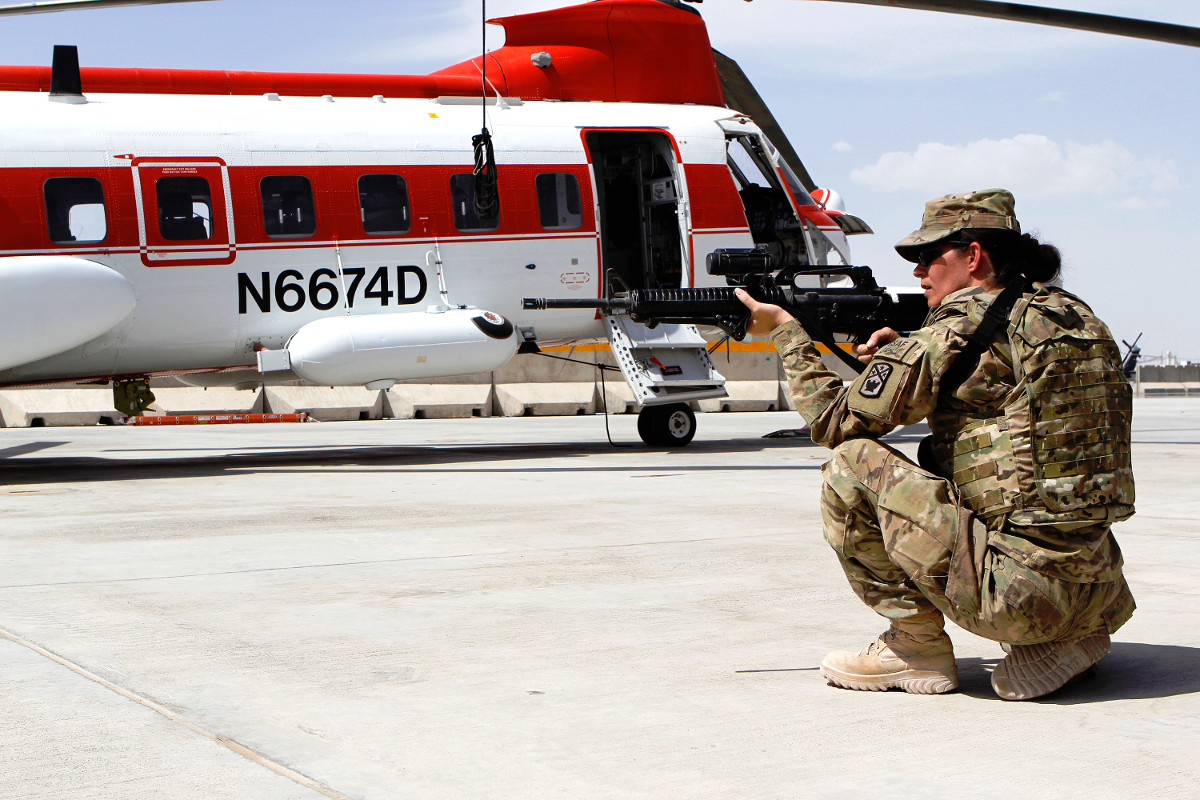
Casualty evacuation and more
The April 2018 contract notice says U.S. special operators in the country are now in need of fixed-wing aircraft that can take off and land on runways as short as 3,000 feet, or even less and possibly at night with the crew having to use night vision goggles. The planes may need to “hot refuel” with the engines still running at forward locations.
Though the contracting notice doesn’t specify any particular types of aircraft, the fixed-wing types have to be able to fly at least 500 miles without refueling while carrying up to eight passengers or as much as 4,000 pounds of cargo. The contract would have to supply trained medical personnel, as well, to be able to render aid immediately and throughout the flight, presumably as the aircraft flew onward to a location with a more robust medical facility.
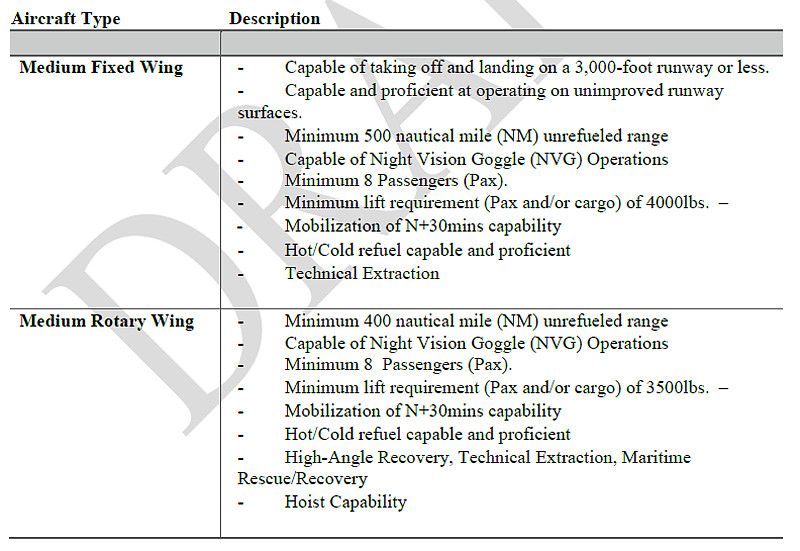
The two helicopters, also with crews capable of night vision goggle operations at night, would need to have unrefueled ranges of a minimum of 400 miles, also while transporting as many as eight individuals or 3,500 pounds of cargo.
In addition to emergency medical technicians to see to wounded personnel throughout the operation, the helicopters would also need to be able to hoist personnel or other items over water or in rugged, mountainous terrain, the latter being referred to as “high angle” recoveries.
The crews of both the fixed-wing planes and the helicopters need to mobilize within 30 minutes of receiving a notification from U.S. Central Command. Having two of each aircraft type is specifically to allow for one to be fully mission capable at all times, with an alternate in case of unforeseen issues.
However, there is no stated requirement, at least in the draft documentation, about how quickly they aircraft need to be able to get to the specified location or complete the mission. Emergency medical professionals generally aim to get injured individuals to the next level of care within the “golden hour.” Though there is some debate about whether a firm 60-minute window makes a difference, it goes without saying that the faster a person with serious, potentially life-threatening injuries can get into a proper medical facility, the better chance they have of making a full recovery.
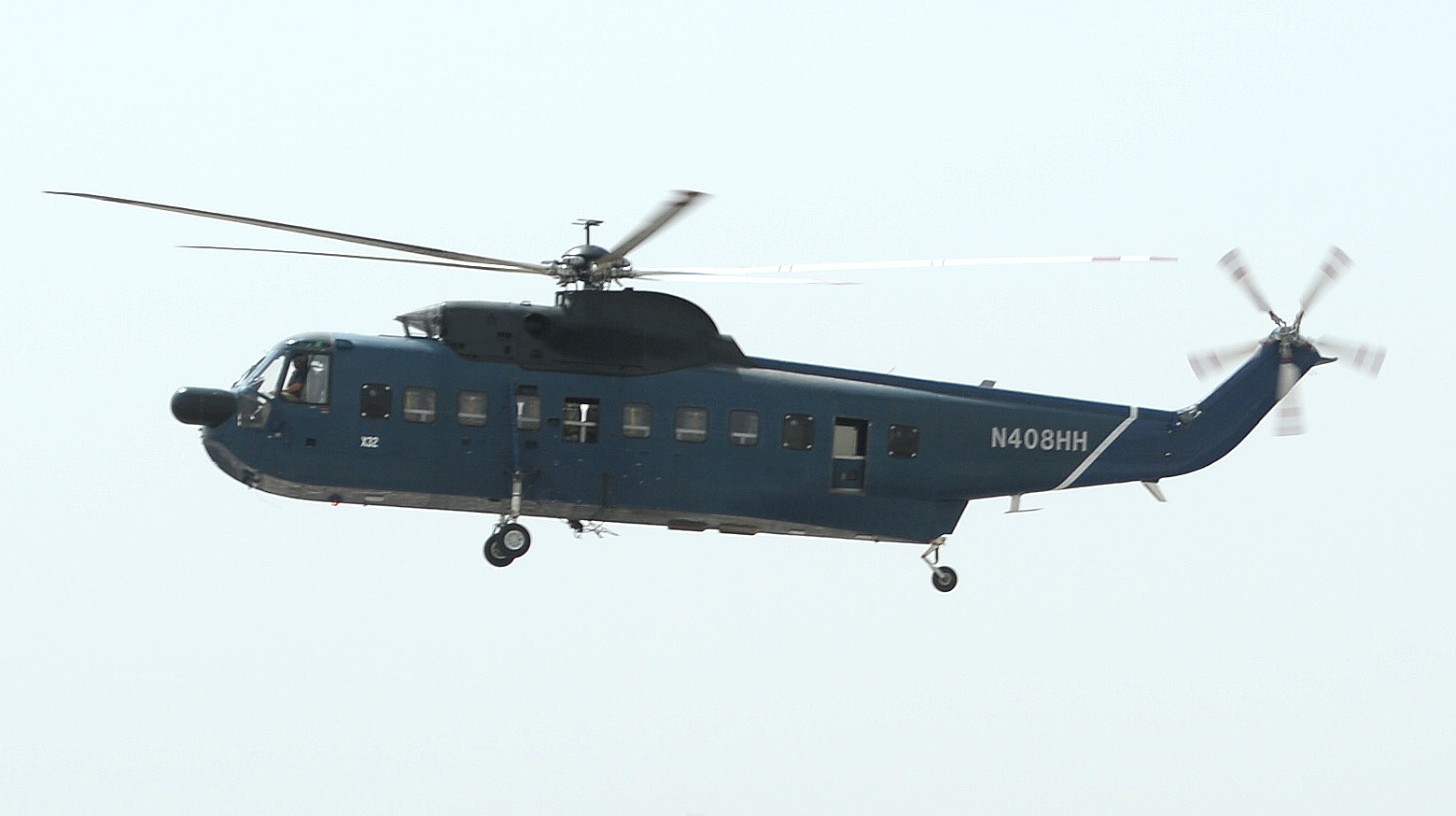
A large operating area
The contracting notice does not say where the U.S. government would base the planes and helicopters and their crews, but identifies a host of potential sites in Bahrain, Djibouti, Kuwait, Oman, Qatar, Saudi Arabia, and the United Arab Emirates. The U.S. military defines all of these as within “Yemen Area of Responsibility,” or Yemen AOR.
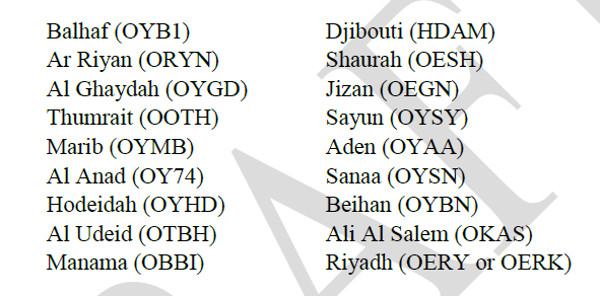
The full list in the documents includes, but is not limited to, major American hubs in the region such as Djibouti-Ambouli International Airport in Djibouti – which hosts Camp Lemonnier, the U.S. military’s only formal base in Africa – Ali Al Salem Air Base in Kuwait, and Al Udeid Air Base in Qatar. Djibouti, which has long served as an American staging ground for operations in Yemen, seems the most likely “home base,” especially given references in the contract documentation to U.S. Africa Command, which oversees operations in that country.
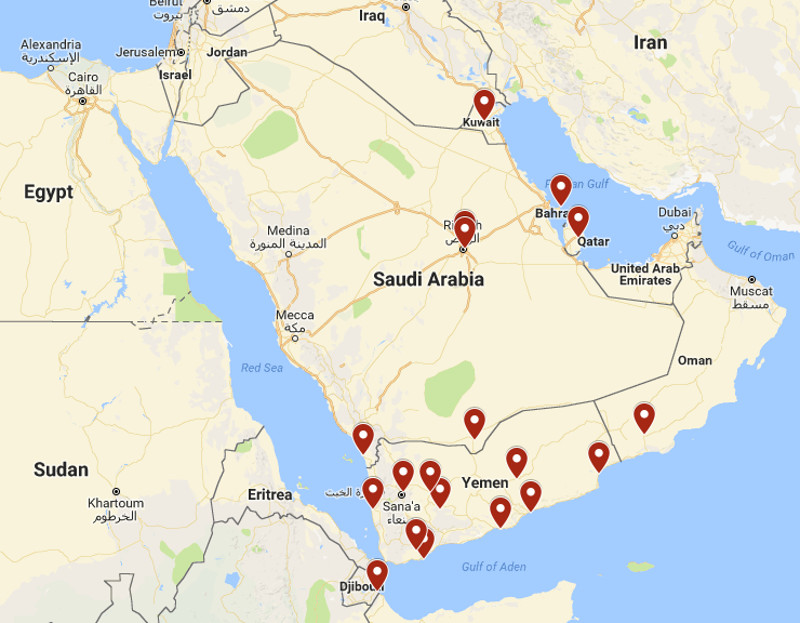
Still, the aircraft would likely make routine use of more forward operating sites situated nearer to the Yemeni border, where the aircraft could stage ahead of planned, short-duration operations or at times when it is otherwise apparent that there are greater risks to American troops. The specified range requirements are otherwise not enough for the aircraft to reach sites in Yemen from many of the designated larger facilities elsewhere in and around the Arabian Peninsula.
The documentation also identifies 10 specific locations within Yemen, which the U.S. military defines as the “Yemen Joint Special Operations Area,” or Yemen JSOA. These include sites across the country, including the capital Sana’a, the port city of Aden, and the heavily contested city of Hodeidah, also written Al Hudaydah, on the Red Sea, the last of which remains largely under the control of Iranian-backed Houthi rebels.
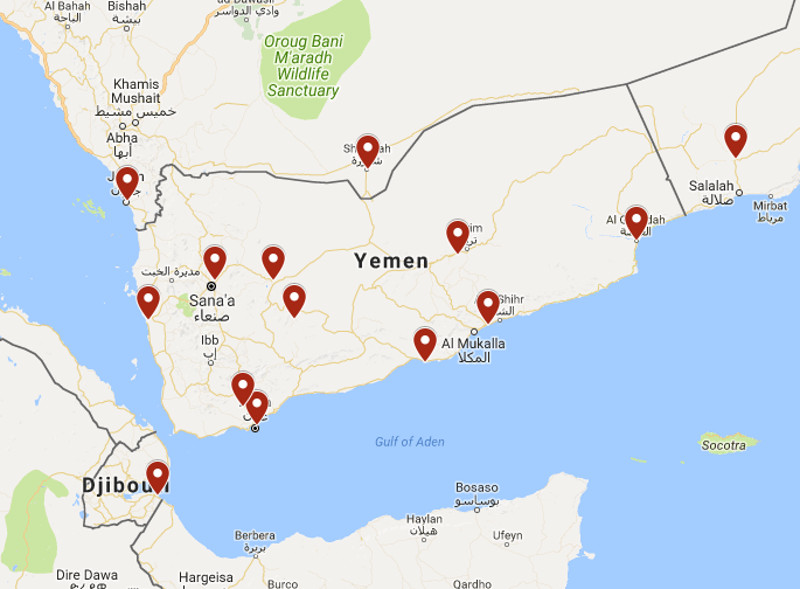
However, it’s not clear how much coverage four aircraft of any type might be necessarily able to provide across such a wide area. From the draft documentation, it appears clear that the contractors’ primary role would be casualty and medical evacuation, potentially rushing to save seriously wounded individuals. But this mission set, especially, requires good positioning and rapid response to be truly effective.
These same issues were at the core of major criticisms about the U.S. military’s response, or lack thereof, to the infamous ambush of American and Nigerien troops in Niger in October 2017. French multi-role combat jets and gunship and transport helicopters were the first air support elements to arrive on scene during that skirmish, which left four U.S. personnel dead.
Contractors, working for U.S. Africa Command and situated in the country’s capital Niamey, who were similarly charged with casualty evacuation and personnel recovery missions, only arrived after the fighting had stopped to recover the bodies. No other U.S. military combat aircraft or combat search and rescue elements were in the country, let alone readily available.
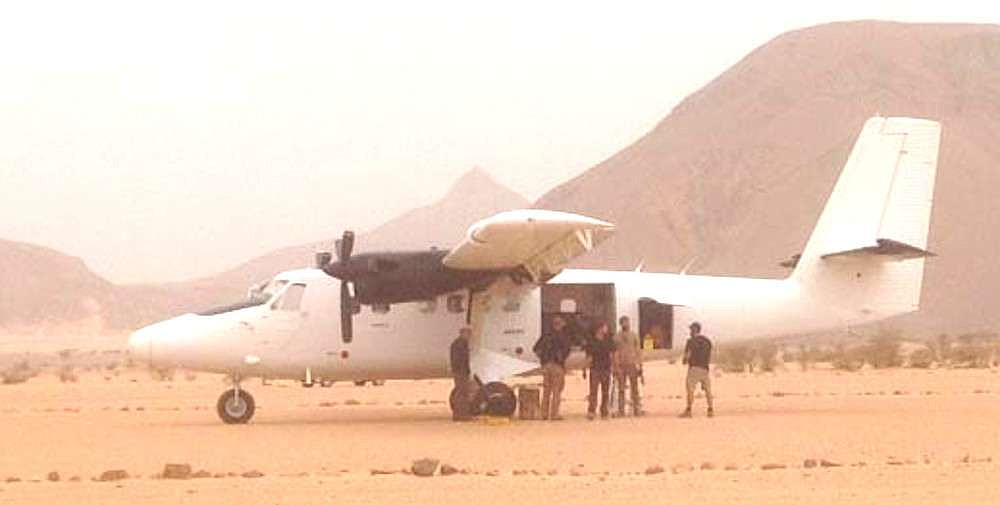
A multi-faceted conflict
Unlike Niger, where militant groups typically engage in more limited attacks, Yemen is in the midst of a brutal civil war combined with an equally grueling and controversial Saudi-led intervention. Despite their official focus on Al Qaeda- and ISIS-affiliated terrorists, there is a significant risk that U.S. special operations forces could end up drawn into the country’s broader conflict.
That the Yemen JSOA apparently contains locations such as Hodeidah, which sits in an area with a heavy Houthi presence, calls into question just how practical it might be for American forces to avoid the Saudi-run campaign, regardless of their stated mission. If nothing else, it indicates that U.S. personnel are coordinating with the Saudis and their partners to a significant degree, otherwise there would be a serious danger of the two sets of operations conflicting with each other.
The operating area also prompts questions about whether the U.S. military mission in Yemen is as limited or distinct from the Saudi-led efforts as officials have made it out to be in the past. As of December 2017, the Pentagon said it had a grand total of five personnel in the country, which seems extremely dubious given the apparent breath of the JSOA.
Renewed questions about the true nature and purpose of America’s involvement in Yemen, especially after a controversial raid in January 2017 left a U.S. Navy SEAL and a number of innocent civilians dead, have prompted challenges from advocacy groups and legislators in the past 18 months. Just recently, though, in March 2018, the U.S. Senate rejected a bill that would have ended indirect American support for the Saudi Arabian effort.
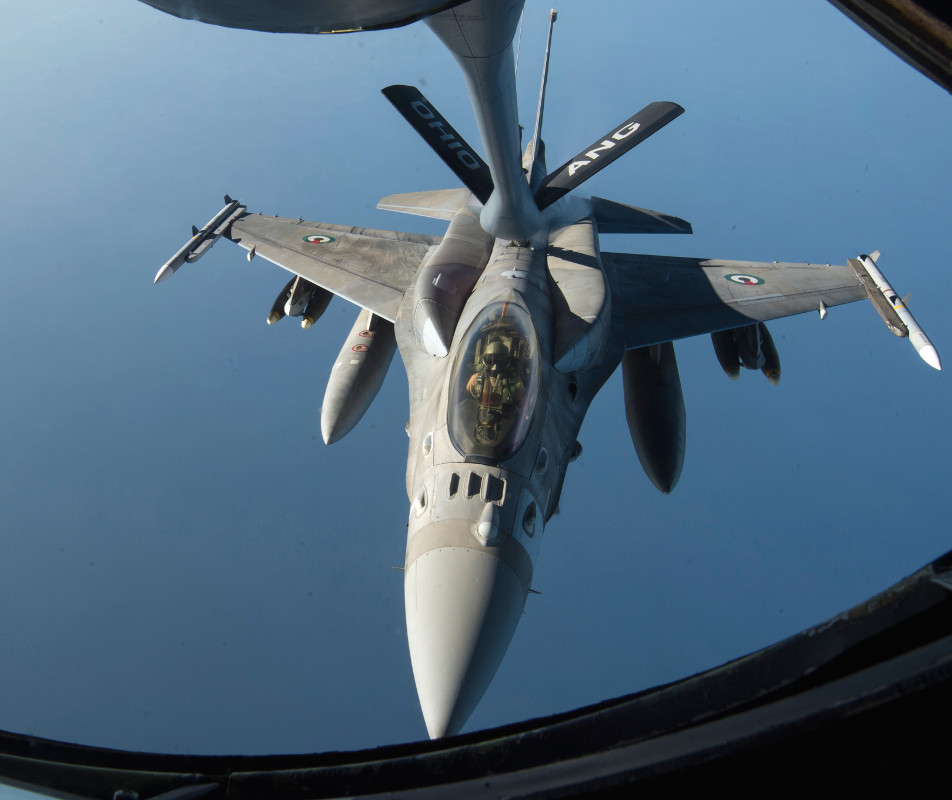
With American aerial refueling tankers supporting the Saudi-led coalition, and past U.S. military intelligence and logistics support for the intervention, Houthi rebels have long made it clear that they see little distinction between the two parties anyway. In 2017, U.S. Central Command conceded that it could not accurately say how much fuel its aircraft were dispensing to the Saudis and their partners in mid-air.
Driving home the point, they attacked multiple
American warships in the Mandeb Strait that links the Red Sea with the Gulf of Aden in 2016 and shot down a U.S. Air Force MQ-9 Reaper drone in 2017. The attacks on U.S. Navy ships provoked an American cruise missile strike on Houthi positions in response.
Since then, the Houthis have only improved their air defense capabilities with both locally improvised infrared surface-to-air missile systems and reported deliveries of production-quality radar-guided types from Iran. That threat, perhaps more than anything else, might limit the ability of contractor aircraft to safely and reliability conduct their missions without some sort military escort.
Any company performing this work would need prior approval to arm their aircraft in any way, though there are no restrictions on other self-defense systems such as radar warning receivers and infrared decoy flares, according to the contract documents. Still, without any weapons on the aircraft, especially the helicopters, it’s hard to imagine that they would be able to fly into anything approaching a hostile area to rescue anyone under fire, inherently slowing their ability to respond.
The Houthis released the video below in March 2018, which they say shows them attempting to shoot down a pair of United Arab Emirates F-16 Viper fighter jets.

Limited resources
Despite the obvious potential issues with the arrangement, the U.S. military might feel it has few other options than to turn to contractors for supplemental casualty evacuation and other aerial support capabilities. Combat search and rescue assets, both fixed and rotary wing types, are limited in number in general, but also in high demand around the world.
But with relatively few available U.S. Air Force HH-60G Pave Hawks to go around American commanders in Afghanistan decided to pair the service’s rescue personnel with U.S. Army CH-47 Chinook helicopters instead in 2017. The Air Force does have Pave Hawks forward deployed to Djibouti that are within range of parts of Yemen, but those aircraft are already tasked to provide support across much of East Africa.
The video below shows U.S. Air Force HH-60Gs based in Djibouti training with other U.S. military services for over-water rescue missions.

There are serious questions about how suitable the HH-60Gs, aging aircraft that are already in desperate need of replacement, are for operations in hot-and-high environments, exactly like those in many parts of Yemen, as well. Air Force personnel in Afghanistan said using the Army’s more powerful CH-47s gave them the ability to perform missions that they simply could not have done with their HH-60Gs.
Other services are also having trouble generating the required aviation elements for various missions due to a variety of factors, including pilot shortages and maintenance and sustainability issues. For example, Chinooks are so highly sought after, the Army is in the process of looking into whether it might be able to create additional CH-47 companies to help reduce the strain on existing units.
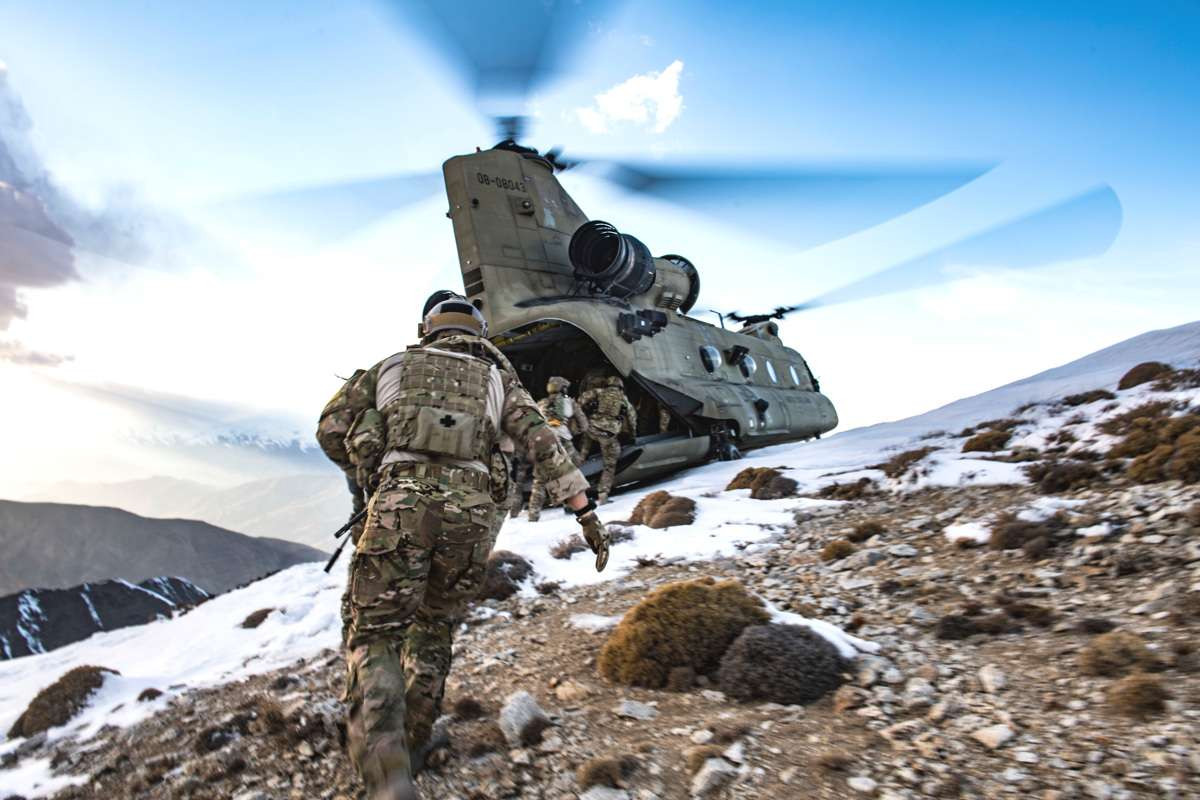
Helicopters remain the primary asset for combat search and rescue operations, owing in no small part to their ability to extract personnel from remote areas with only small available landing zones. However, U.S. Marine Corps MV-22 and Air Force CV-22 Osprey tilt-rotors are steadily becoming a better option.
With greater speed and range than many helicopters, these aircraft could potentially be more flexible, able to respond to crises much further away from their home bases. That speed would make them less of a target for enemies on the ground too.
U.S. Marine Corps Osprey crews train to perform combat search and rescue missions, which they refer to as Tactical Recovery of Aircraft and Personnel (TRAP), from both bases on land and U.S. Navy amphibious ships. They have supported operations in Iraq and Syria in this capacity and another specialized task force is on call for similar missions in Africa. Air Force CV-22s also prepare for casualty evacuation missions, but are generally dedicated to supporting special operations forces specifically.
Unfortunately, while taking off or landing vertically, the Osprey presents much the same target as a helicopter. In 2013, three Air Force CV-22s suffered significant damage while attempting to conduct a non-combatant evacuation operation in South Sudan. A U.S. Navy SEAL on board one of the aircraft nearly died.
And the V-22 fleets are expensive to operate and maintenance heavy. Combined with the desire within both the Marines and Air Force to focus more on using the aircraft’s unique capabilities for air assaults, amphibious operations, raids, other special operations missions, commanders have often been reluctant to give them up for lower profile missions.
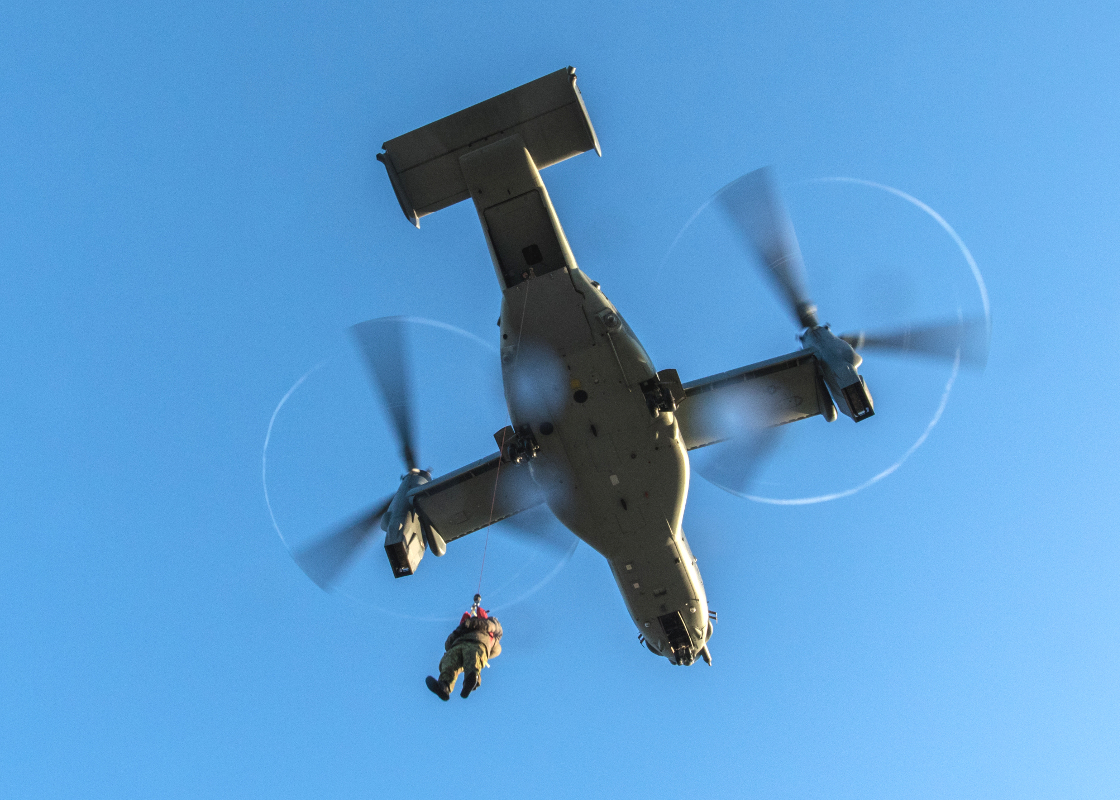
Something rather than nothing
All of these issues and more have continually pushed the U.S. military as a whole to pursue contractors to provide support in often remote and austere locations. And some capability is better than no capability at all.
“You’re never going to have the golden hour in Africa; it’s not possible,” retired U.S. Army Brigadier General Donald Bolduc, who was last in charge of Special Operations Command Africa, told The New York Times in the aftermath of the ambush in Niger. “But you have an acceptable amount of time that commanders have agreed on.”
As such, private airlift continues to be a critical part of American military activities, especially across Africa, as well in support of other so-called “small footprint” operations elsewhere. In many of those cases, there is also a distinct desire to keep a low profile, for operational security and political reasons, which effectively precludes the deployment of a larger military force.
In March 2018, U.S. Transportation Command put out a contract notice similar to the one regarding Yemen, but for fixed and rotary wing support for American special operators in the Philippines. U.S. personnel are in that country at present helping government forces tackle ISIS-aligned terrorists as part of Operation Pacific Eagle.
Other U.S. government agencies are increasingly turning to contractors for many of the same reasons. The U.S. State Department uses private firms to run “Embassy Air” shuttle flights in Iraq and Afghanistan.
There is a long history of using legitimate businesses and front companies for covert activities, too. We’ve spotted them flying transport helicopters and intelligence gathering aircraft for other unknown agencies.
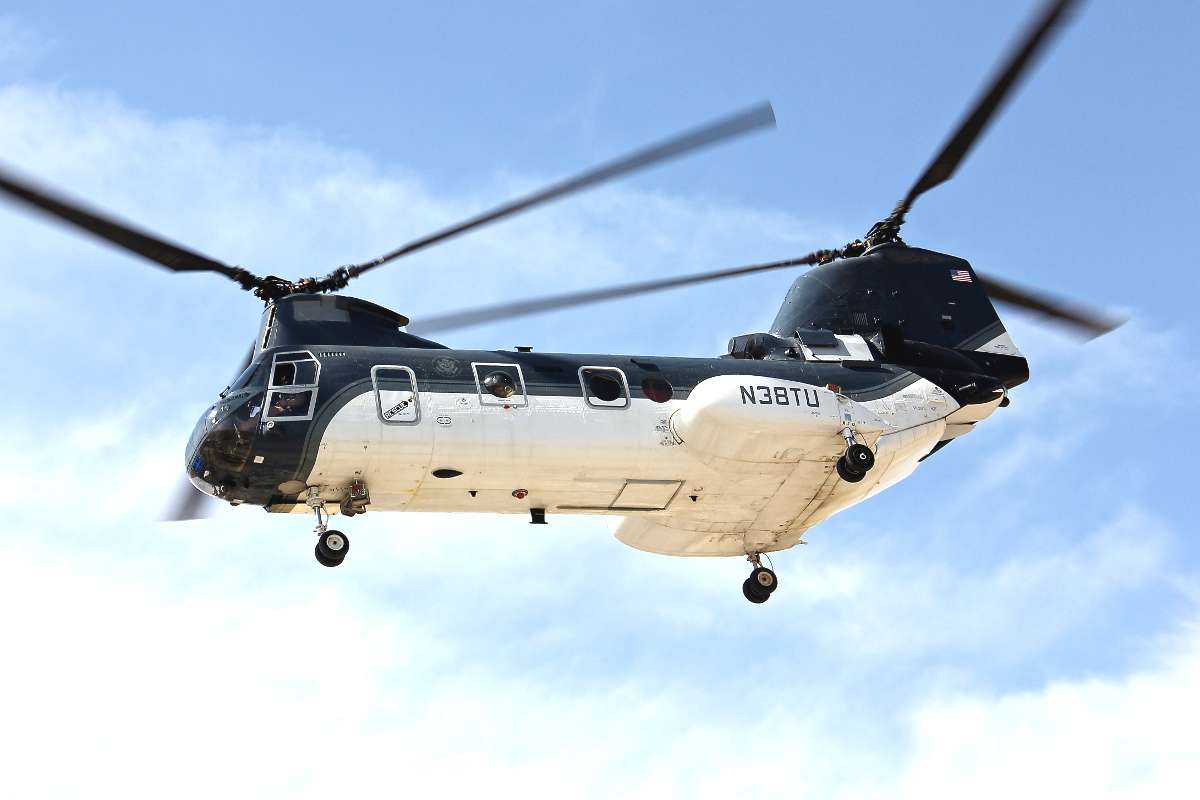
In 2015, shadowy Sikorsky S-92 helicopters appeared in Djibouti, which they might have been supporting earlier operations in Yemen, as well. In 2017, The New York Times reported that the U.S. government had snuck in supply shipments for secretive special operations forces in Yemen with humanitarian aid deliveries aboard contractor cargo aircraft.
The concern, of course, remains that American special operators in Yemen will have an increasingly difficult time keeping their presence limited and separate from the broader conflict. If they find themselves caught in a larger skirmish – or even a small, but fierce one such as the incident in Niger – the contractor-operated rescue planes and helicopters might just not cut it, especially if those aircraft can’t defend themselves.
Contact the author: jtrevithickpr@gmail.com
